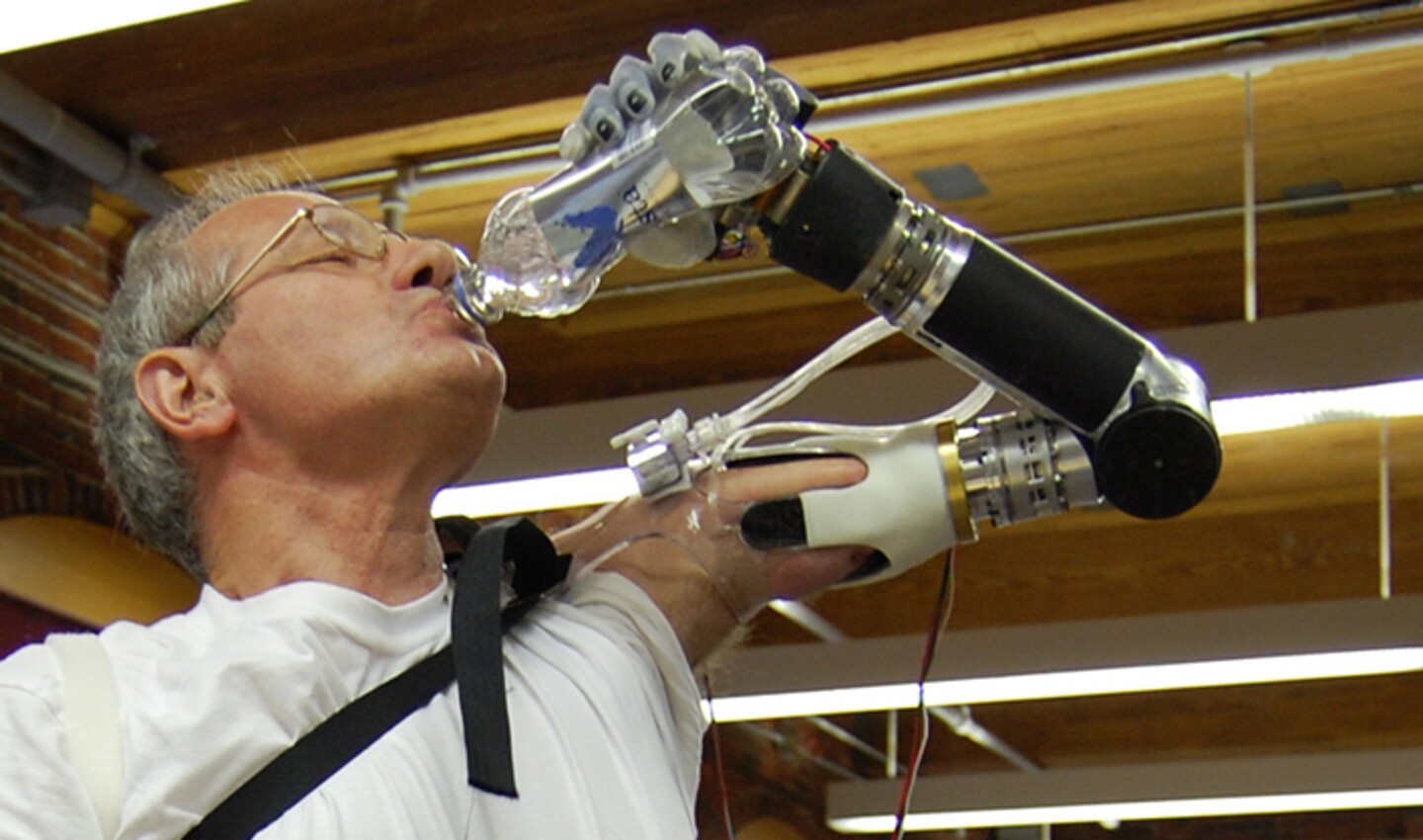Prosthetics have come a long way in recent years, with many artificial limbs incorporating advanced robotic and cybernetic systems that include everything up to and including mind control. Unfortunately, for all these advances, the lack of prosthetics capable of complex motor control means that most users see them as tools rather than replacement limbs. However, that may be changing as the US Food and Drug Administration (FDA) has announced approval for marketing of the DEKA Arm system, the first prosthetic arm set to hit the market that translates signals from a patient’s muscles to carry out complex tasks.
Manufactured by DEKA Integrated Solutions in Manchester, New Hampshire, the DEKA Arm was developed under DARPA’s Revolutionizing Prosthetics program that aims to develop arm prostheses with near-natural control. DARPA sees the DEKA Arm as a way of expanding the options for amputees, especially those using the split-hook hand developed in 1912. It says a lot about how far prosthetics have to go that something developed over a century ago is still so widely used.
The DEKA Arm is aimed at aiding those who are using muscle-powered prosthetics; providing them with an arm that is not only less exhausting to use, but also one with finer and more complicated control. Designed for those with limb loss occurring at the shoulder joint, mid-upper arm, or mid-lower arm, the DEKA Arm uses electrical signals from the muscles picked up by electromyogram (EMG) electrodes to control the arm. This isn't new. The Boston Arm had similar capabilities over forty years ago.

What’s different is that the battery-powered DEKA Arm allows simultaneous control of multiple joints with ten powered movements using a variety of input devices, including wireless signals from sensors attached the the user’s feet. In addition, the hand has six user-selectable grips. That’s not bad for an arm that’s the size and weight of a natural adult arm.
DARPA says that creating the arm required eight years of work on miniaturization of motors, computer controls and sensors, as well as developing new lightweight materials that were up to the job. All of this had to be put together into a rugged package that could handle day-to-day punishment.
The FDA says that for approval of the DEKA Arm it used its de novo classification process intended for novel low- to moderate-risk medical devices that are first-of-a-kind. Based on clinical studies of 36 DEKA Arm study participants, the FDA concluded that 90 percent could use the arm for everyday tasks that previous arms couldn't deal with, such as using locks and keys, preparing food, eating, using zippers, and brushing and combing hair. The agency also examined the arm’s software and electrical systems, and tested it for impacts and durability under exposure to common environmental factors such as dust and light rain.
The approval opens the way for DEKA to pursue a commercial release of the arm.
The DARPA video below shows the DEKA arm in action.







